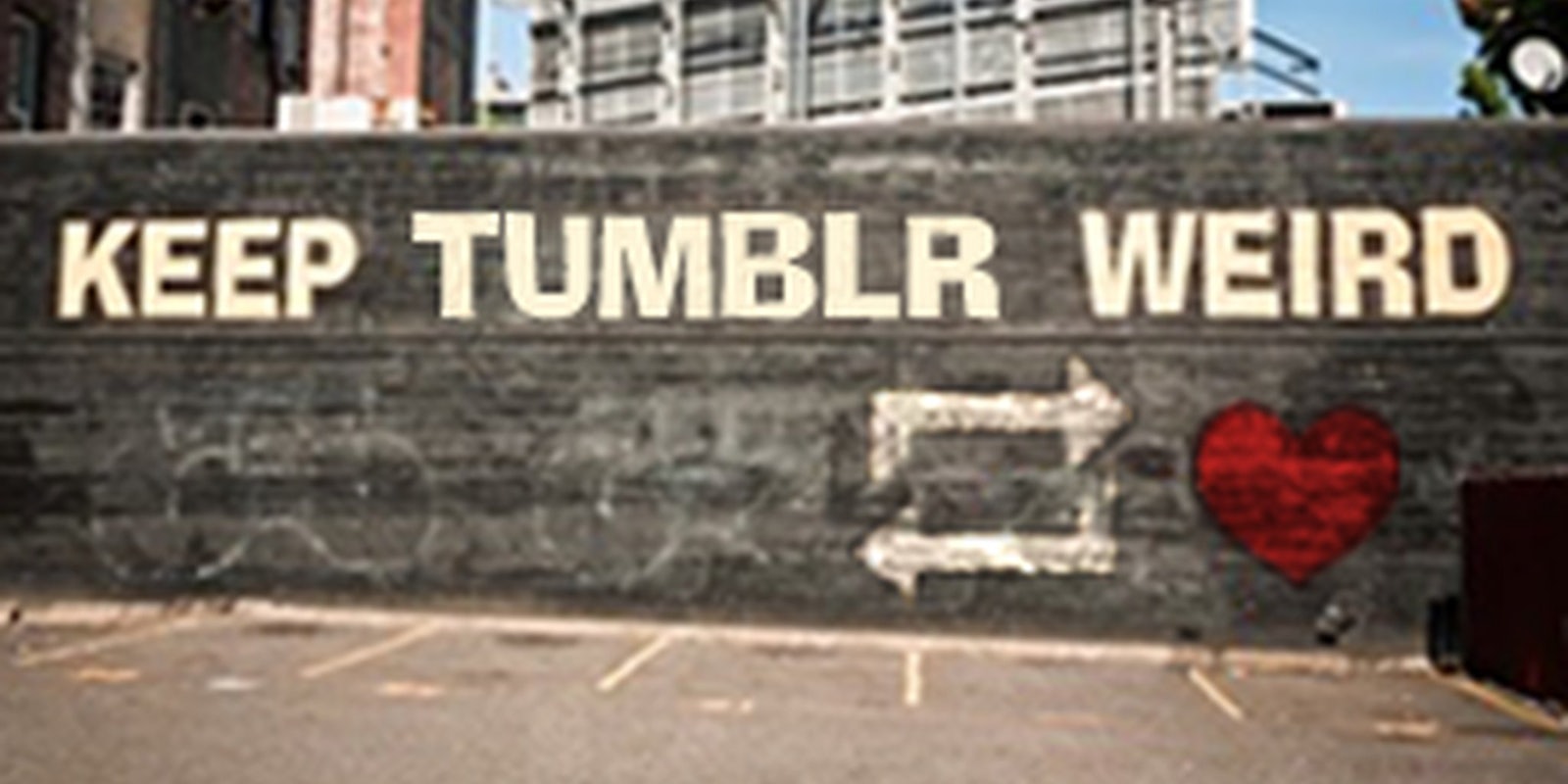There are two secrets to Tumblr’s runaway success: design and community engagement.
In 2012, the microblogging network became one of the top 10 most visited sites in the world, with an audience of roughly 170 million people per month—a dedicated userbase that includes everyone from President Obama and Beyonce to fandom communities and GIF artists. While Tumblr Storyboard—the company’s in-house editorial operation—helps spotlight and foster users’ creative contributions, the site’s simplistic interface drives the sharing of content, according to Lee Rubenstein, Tumblr’s seventh user and cofounder of art forum EatSleepDraw.
“It is still very easy to use compared to Facebook,” he said.
Yet, amid never-ending reports on potential buyers, long-term profitability, and advertising revenue, Tumblr’s future appears to be planned out in dollars and cents instead of notes—the internal mechanism that tracks how many likes, reblogs, and comments a post has received—a sentiment furthered by founder David Karp recent Forbes profile.
“There’s more to do, there’s always so much engineering to do to serve more and more traffic, particularly when we don’t want to disturb the same traffic,” the 26-year-old high school dropout told the publication that named him one of its 30 Under 30. “The biggest thing by far is the infrastructure. … [I]t demands an extraordinary team of real focus to make sure that we are constantly engineering Tumblr for the future.”
But what exactly does that future look like, and more importantly, what should it look like according to the site’s most influential users?
At the center of concern is the Radar feature, a tool used to highlight and introduce original and interesting content to all users.
While originally a source of pride and credibility for Tumblr users eager to have their content shared, the feature became a potential revenue source in May, after Karp announced plans to sell Radar spots to advertisers for $25,000 a pop.
“On one hand you need the funds to keep a site operational, but on the other hand, the Radar used to be a badge of honor,” noted Mr. GIF, a New York-based GIF duo. “Getting on that radar is a huge moral boost for any creator. Some people think its unfair that brands can buy their way onto your dashboard.”
Based on sponsored Radar ads and its Spotlight feature, where people pay to have their accounts promoted across specific tags, Tumblr has set a $100 million revenue goal for 2013, a year Gawker founder Nick Denton predicted will be “brutal” for the company.
And with such a lofty goal, more interface changes are likely to come—and community outcry, as with every major social network, won’t be far behind.
“The most vulnerable thing in the Tumblr experience is its Dashboard—the main point of consumption, and it’s the thing I think many of us are worried about,” said marketer and Tumblr watchdog Andrea Lopez, who goes by bluechoochoo on the site.
Whatever changes occurs, they will be incremental, stressed Tumblr designer Peter Vidani, who helped architect the Pinned Posts feature, among other notable features.
“The obvious reason this is good is so that you’re not scaring everybody,” Vidani said. “By doing this we can learn a lot from each change we make and that will inevitably affect the other changes we thought we wanted to make.”
Even still, as profit increasingly factors into the decision-making process, Tumblr has a tightrope to walk with its userbase—the content creators and agenda drivers who helped establish the company and drive its success.
Some influential users, like Rubenstein and comedic powerhouse Benjamin Grelle, better known as the Frogman, believe a profit-sharing model akin to YouTube would be a more community-friendly way of doing business.
“I think it is crucial that Tumblr take care of their content creators,” Grelle said. “They should work to make this the best possible place for people to post things they make. If Tumblr could shift the perception from a place where people mostly repost things, to a place where things originate, I think they would leave their competitors in the dust.”
Illustration by Jason Reed


